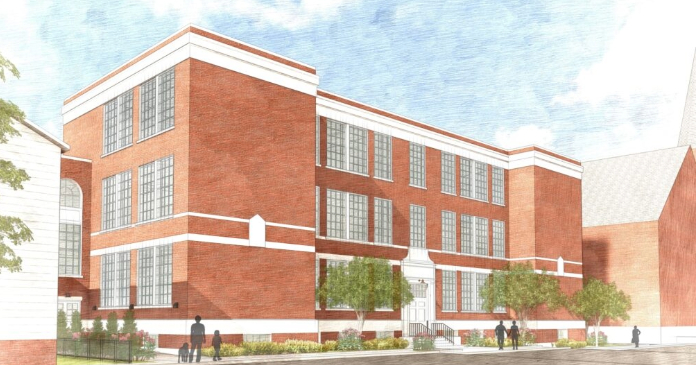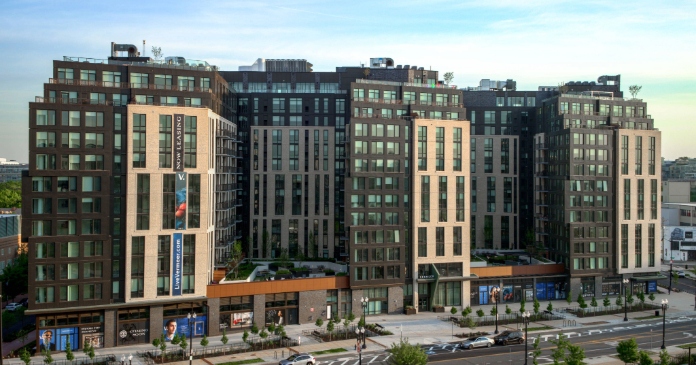The Federal Reserve recently concluded that the “economic outlook had softened somewhat” and now predicts that the economy will grow between 3 percent and 3.5 percent this year, down from its prior forecast of 3.2 percent to 3.7 percent. Financial services firm JP Morgan on July 16 reduced its forecast for U.S. GDP growth this year by a percentage point to 2.6 percent. “The loss of global growth momentum at the end of the second quarter is greater than we had anticipated,” according to the firm’s global data watch report.
“We’ve definitely hit a soft patch,” says Wharton finance professor Jeremy Siegel. “It looks like a temporary pause in the recovery, but my feeling is that the chance of a double-dip is extremely low.”
According to Siegel, a slowdown at this point in the recovery is to be expected. In a typical recession, inventory levels fall, then ramp up sharply to meet pent-up demand in the early phases of the recovery. This recovery appears to have begun last summer and was gaining steam in the first half of the year as inventories were replenished. Now, production is leveling off as inventories reach normal levels, softening overall growth. At the same time, Siegel adds, government stimulus programs designed to jump-start the economy, such as cash-for-clunkers and incentives for first-time homeowners, have now ended.
Unemployment, which remains near 10 percent, continues to be a significant drag on the economy. “The issue at the moment is that the unemployment number will be lousy for a long time,” says Wharton management professor Peter Cappelli. He notes that even as hiring expands, unemployment will increase. That’s because unemployment figures only measure people actively seeking work. As hiring improves, more people who have given up searching for work will begin filing applications for jobs and will be counted as unemployed, driving the number up and consumer confidence down.
A credit recession
Cappelli cautions that it is difficult to compare the current recovery to those that occurred after other recessions. Most recessions are caused by a build up of inventory or production capacity in the economy that must be worked off over time. In contrast, says Cappelli, “this was a credit recession. Bang. All of a sudden, credit disappeared. How it comes back—I don’t think we have a clear guideline.”
He points to housing as a key to recovery. While U.S. mortgage rates are low, Cappelli says it is difficult for many people to get approval for a mortgage. “That’s what’s holding back the economic recovery. The big thing to watch for, because it is such a big chunk of the economy, is housing.” More than one million American households face foreclosure this year, on top of 900,000 who lost their homes in 2009, according to RealtyTrac, which adds that in a typical year, 100,000 foreclosures take place. Meanwhile, the Commerce Department reports that housing starts were down 5 percent in June.
“The housing market is going nowhere,” according to Wharton professor of real estate and finance Susan Wachter. However, she points out that housing prices are no longer spiraling down and are not likely to trigger a double-dip recession. She predicts that prices will be flat for 2010, but that it will take years to work off the current oversupply of homes—including those that are not officially on the market but are “underwater,” leaving homeowners trapped in their properties. “What we’re in for is a slog—a very long recovery.”
Housing and employment have strong effects on consumer spending, which makes up 70 percent of the U.S. economy and is another closely watched gauge of recovery. Here, too, trends have turned downward in recent weeks. U.S. retail sales in June dropped for the second consecutive month, falling 0.5 percent from May. The latest Reuters/ University of Michigan index of consumer sentiment unexpectedly fell from 76 to 66.5—a sharp decline after the index hit its highest level in 2.5 years a month earlier.
For example, Wharton management professor John Paul MacDuffie points to auto sales, which had dropped to between nine million and 10 million units a year, down from 15 million at its peak in 2007. He says the normal replacement rate is 13 million, so that while consumers have put off buying new cars, ultimately they will have to replace rundown vehicles, leading to a bump in sales and production that should boost the recovery. “Auto sales are coming back, but I did notice in June there seemed to be a break in the curve of recovery,” MacDuffie notes. “The only explanation I can see is simply higher insecurity. People are worried.”
Trouble in Europe and China
Beyond the U.S., Wharton finance professor Franklin Allen points to the debt crisis in Europe as another problem that is testing the economy’s ability to recover. As European countries adopt harsh budget cuts to reduce debt, employees will be laid off, leading to falling consumer demand which will hurt the global recovery. The cuts that have been announced seem to have calmed markets for the time being, he adds, but it remains to be seen if countries will be able to enact the harsh austerity programs that come with massive layoffs. If countries don’t go through with it, Allen predicts, the volatility that plagued financial markets in early summer will return. He notes that the upcoming results of European bank stress tests are another key to reassuring European markets. However, he says, “My guess is these tests will be a whitewash” and there might be a backlash “when people realize the stress tests are not really serious.”
At the same time, China can no longer be counted on to provide as much lift to the global economy as it had during the early part of the recovery, says Wharton management professor Marshall Meyer. He says China’s economy will slow this year from a 10 percent growth rate to 7 percent or 8 percent. As a result, global demand will decline. However, Meyer notes that over time, the Chinese government’s decision to slow growth and encourage more consumption throughout rural China will be good for the global economy, because it will lead to more long-term political stability and continued economic growth.
All eyes on Washington
As economic conditions grow weaker, renewed attention is turning toward Washington. However, policy makers have fewer options because they are bogged down with debt—which is becoming a critical issue in the mid-term elections this fall. Final passage of a new financial reform package has removed some uncertainty in the financial sector. “It’s a good bill,” says Allen, but he adds that the legislation fails to address some of the major problems that led to the economic collapse and that it has no international oversight. “It will be fairly limited in practice.”
According to Wharton professor of business and public policy Howard Pack, GDP is not likely to expand further without renewed government stimulus. However, he argues that the Obama Administration used too much of its political capital to pass health care legislation through Congress. Consequently, it will have trouble getting new economic programs enacted in the face of claims that the government deficit is out of control and will damage the economy further in the future.
“I don’t think the deficit is a problem, but there are people in the business community who think the deficit will lead to a decrease in confidence and an increase in interest rates.”
Pack says that at a minimum, Congress should extend unemployment benefits and provide aid to state and local governments. (Congress approved an additional extension of unemployment benefits for millions of Americans who remain out of work.) Both are efficient ways to pump money back into the economy, where it can multiply quickly as individuals spend their paychecks. Stimulus projects that are directed toward infrastructure development can take two to three years to work because of the time needed to develop plans, secure permits and initiate construction, he points out.
Pack, like Cappelli, says this recovery is trickier than others because of its root cause in the financial collapse. Recessions are sometimes triggered by the U.S. Federal Reserve, which raises interest rates when the economy starts to overheat and head toward inflation. This time, however, the recession was brought about by over-leverage throughout the financial sector. “Until the financial stuff is cleared up, we won’t be out of recession,” says Pack. “It’s very different than other recessions—much deeper and much more profound.”
Mark Zandi, chief economist and co-founder of Moody’s Economy.com, says there is good reason to be concerned about the deficit, but he says it will not be possible to address the nation’s fiscal problems until the economy is well on its way to recovery. “If we backslide into recession, the fiscal problems will balloon many times over,” he predicts. He, too, argues that the extension of unemployment benefits and expanding aid to state and local government are worthwhile expenditures. The deficit must be cut, he says. After the economy has recovered, the government should lay out a long-term plan to reduce spending over the next decade or so. According to Zandi, a credible plan would reassure investors and keep interest rates from soaring.
Kent Smetters, Wharton professor of insurance and risk management, says the government has little capacity to expand stimulus programs because of the size of the current deficit and future obligations to pay for entitlement programs such as Social Security and Medicare. “I’m cautious, if not pessimistic, because there is so much government debt, and the government doesn’t have the capacity to spend its way out of this. I see fairly anemic growth for a good five years, not a quick recovery.”
In addition to constraints on fiscal policy, Smetters notes that interest rates are at historical lows, and the Federal Reserve has little power to use monetary policy to stimulate the economy further, although one approach might be a tax policy that rewards new investment. Unlike reducing capital gains taxes, which relate to investment that has already been made, expensing for investment would generate new spending that could stimulate growth. “It is pretty costly,” Smetters acknowledges, “but if you’re going to have a big deficit, let’s at least have good reasons for it.”
Smetters adds that another problem standing in the way of recovery is a lack of leadership in Washington that can overcome political polarization and initiate effective economic policy. Zandi is also concerned about the attitude in Washington, particularly heading into the mid-term elections in November. “Economic policies have gotten completely wrapped up in the political debate, and that could lead to a serious mistake.” He says politicians are afraid to initiate new stimulus programs because of popular concerns about the budget deficit and fears that taxes will have to increase. The same thing happened in the early days of the crisis, he notes, when political posturing going into the 2008 elections delayed passage of the Troubled Asset Relief Program (TARP), which only “exacerbated what was going on.”
Reasons for optimism
Zandi has increased his odds of a double-dip recession—from one-in-five to one-in-four. However, his forecasts for 2011 and 2012 are more upbeat. He predicts real GDP will rise 4 percent in 2011 and 5 percent in 2012.
“The most fundamental reason for optimism is strong corporate earnings,” he says. Second quarter earnings are not as strong as the prior two quarters, but even though there are concerns about disappointing revenues, profits continue to remain strong and many companies are sitting on loads of cash. With these resources on hand, companies will have the ability to launch new initiatives and begin hiring again. Small businesses, he adds, continue to struggle, but large and mid-sized firms should be able to drive new expansion in the next six to 12 months.
Siegel, too, is optimistic about the recovery going forward. “I think what we are going to see is a pick up in consumer spending, a pick up in exports, and [we will] finally begin a recovery in the housing market which is so terribly depressed.” He adds that normal household formation will eventually lead to demand for housing. “The stock market will improve. The headlines from Europe are less ominous, and people will see that we’re not slipping into another recession.”
Author: The Commerce Department, in revisions issued in July, estimates the economy shrank 2.6 percent last year—the steepest drop since 1946. That’s worse than the 2.4 percent decline originally estimated.















